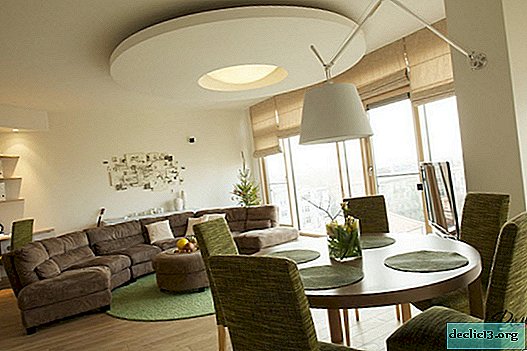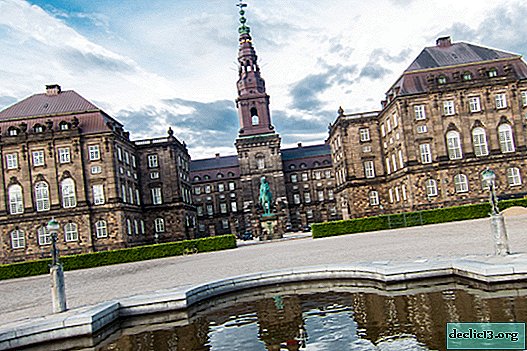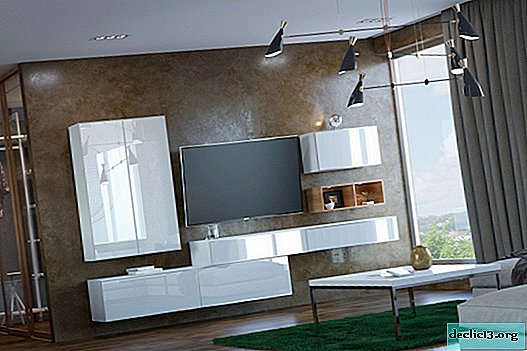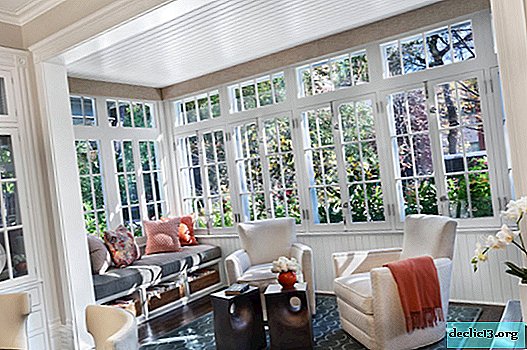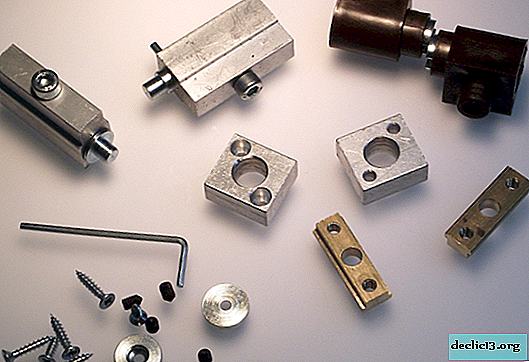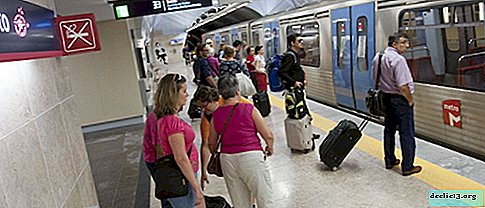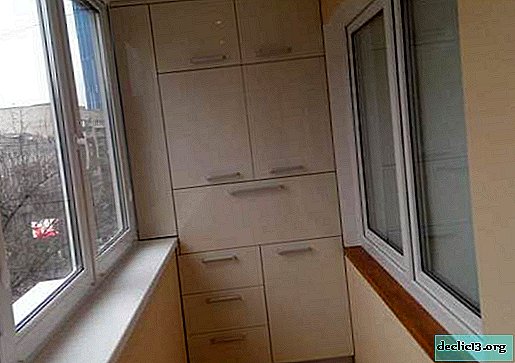Berlin metro - the oldest subway in the country
Berlin metro is not only the most popular, but also the most convenient form of municipal transport. More than 500 million passengers use its services annually, among which there are many tourists. If you also belong to this category, then you are simply obliged to study the scheme of the Berlin underground and find out the basic rules for its use.
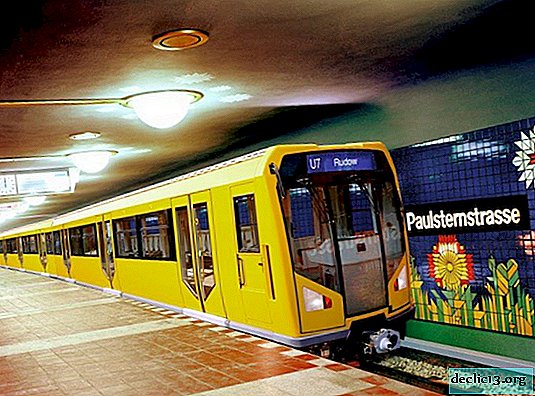
General information
Being the main city of the country, the German capital simply can not do without such an important type of transport as the subway. In this regard, the answer to the question of whether there is a metro in Berlin will be quite unambiguous - of course, it is here. Moreover, it is on it that the entire transport system of this city is based.
Having been born back in 1902, U-Bahn Berlin became not only the oldest, but also the most elaborate subway of modern Germany. The idea of building the Berlin metro belongs to the famous German engineer Werner von Siemens - he created his scheme. Despite the fact that the first metro, opened in London in the middle of the 19th century, was able to show itself from the very best side, the city authorities reacted to this idea with great distrust. Many Council members feared that underground tunnels would damage the sewer system and other important communications. It took me 17 years to think it over - exactly the time it took to approve the first 6-kilometer section, which became the prototype of the modern metro.

The underground in Berlin consists of 2 parts: underground or U-Bahn and ground or S-Bahn. At the same time, about 80% of the tracks are underground, and the rest passes through overpasses, embankments or bridges and goes far beyond the city limits. A transfer from line S to line U and vice versa is possible at almost any station. The main thing is to closely monitor the scheme and read the pointers. Firstly, the same platform can serve several directions at once. And secondly, the transitions are made in huge halls with an intricate layout. That is why the scheme of the Berlin subway should always be at hand.
Stations of the Berlin subway are located at a shallow depth, and the distance between them in the business part of the city does not reach 1 km. At most transfer points you can find fast food outlets, shops, newsstands, banks and other elements of urban infrastructure. The main feature of the metro in Berlin is the availability of GSM cellular communications, free Wi-Fi and chargers installed in ticket machines. Most of these innovations appeared back in 1995, becoming the first of its kind.
Being one of the most technologically advanced undergrounds in the world, the Berlin metro managed to preserve the flavor of the pre-war city. For this, historical photographs, advertising posters and architectural elements typical of those years were used. The most striking example of such a design is the Wittenbergplatz station, more reminiscent of a museum than an ordinary transport hub.

Another highlight of the Berlin metro can be called cast-iron scales made to order more than 100 years ago. Everyone can weigh themselves on them - it’s enough to pay only 10 euro cents. However, the sights of the country's oldest metro end here, because frugal Germans preferred not to invest in the design of the stations, but in their number and convenience.
In this regard, the metro in Berlin has a simple and concise design, and those rare jewelry that you can still see in it have high practicality and functionality. This tradition also touched on the plates indicating the entrances and exits from the stations. If you read the reviews on how to find the metro in Berlin, it can be noted that this is not a big deal. The entrances are marked with a U, the exits are marked with Ausgang.
Currently, the Berlin Underground is one of the most developed transport hubs in the world. If we talk about the German capital, there is not a single place in it that could not be reached using the U-Bahn or S-Bahn. Of course, for many this scheme will seem confusing, but once you delve into it once, you will be able to forget about possible difficulties forever.
Metro map

In the Berlin underground there is a linear principle of train movement with a huge number of interchange points where you can use any other type of municipal transport. The current Berlin metro scheme has 10 main lines connecting the following parts of the city:
- U6: Alt-Tegel - Alt-Mariendorf;
- U1: Uhlandstraße - Warschauer Straße;
- U7: Rathaus Spandau - Rudow;
- U55: Berlin Hauptbahnhof - Brandenburger Tor;
- U2: Pankow - Ruhleben;
- U9: Rathaus Steglitz - Osloer Straße;
- U3: Nollendorfplatz - Krumme Lanke;
- U5: Alexanderplatz - Hönow;
- U4: Nollendorfplatz - Innsbrucker Platz;
- U8: Wittenau - Hermannstraße.
All of them are plotted along with the S-Bahn lines, so an inexperienced traveler can not always figure it out on his own. But do not rush to give up! Faced with difficulties in reading the map of the Berlin metro, feel free to ask for help from local residents. Being open and friendly, they will never refuse to provide a free consultation.

With a huge number of branches, the Berlin metro extends over 152 km and includes 173 stations. The longest line is the 32-kilometer U7 - this is the longest underground route not only in Berlin, but throughout Germany. But U55, judging by the metro scheme, is the complete opposite of U7 - its length is 1.5 km.
On a note! Despite a carefully designed scheme, no metro line connects Berlin with airports. Due to this, Tegel will have to travel by bus to the city, and from Schönefeld by bus or train.
Hours and Intervals
The Berlin metro starts at 4 a.m. and ends at 1 a.m., but on Saturday and Sunday all central lines are open around the clock. At rush hour, the break between flights does not exceed 3-4 minutes. In the rest of the period, the interval of trains is 5-10 minutes.

In addition, in 2003 night lines were launched on all routes except U4 - they run on the night from Friday to Saturday and from Saturday to Sunday every quarter of an hour. On the remaining days of the week, night buses run along these routes on the same schedule. It is also worth noting that each flight arrives at its destination in strict accordance with the schedule - the famous German punctuality affects.
What's the fare?
The fare in the Berlin metro depends on 2 factors - the type of travel and tariff zones, which can be easily tracked using the metro scheme. Let's consider each of them.
Having carefully studied the metro map of Berlin, you can see that the entire territory of the German capital, together with the suburbs adjacent to it, is divided into tariff zones:
- Zone A - the central part of the city (to the ring of the city railway);
- Zone B - other areas beyond the boundaries of the city train;
- Zone C is the territory of the federal state of Brandenburg, located around the German capital.
As for travel tickets, they are divided into 6 types:
- Kurzstrecke (single or short). It allows you to travel 3 stations on the U-Bahn (transfers are allowed) and 6 stops on the S-Bahn (transfers are prohibited). Valid in zones A and B, as well as in the transition from B to C.
- Einzelfahrschein (single). It remains active for 120 minutes from the moment of activation. It is considered universal, applies to all types of urban transport, allows you to change trains and stop any number of times. However, you can go on this ticket in only one direction. Applies to all 3 zones.
- Tageskarte (per day). It gives the right to unlimited use of any type of municipal transport. Valid throughout the day prescribed in the ticket, or from the moment of breaking through to 3 o'clock the next day. At the same time, not only an adult, but also 3 minors aged 6-14 can pass along one pass.
- Kleingruppen-Tageskarte bis 5Pers (group for 12 hours). Great offer for a company consisting of 2-5 people. It allows you to drive around on any type of transport until the end of the day indicated on the travel card, or from the moment of activation until 3 o’clock the next day.
- 7-Tage Karte (for a week). Gives the right to make any number of trips for 1 week. The action of such a ticket ends at 00:00 on the seventh day. The countdown is from the date recorded on the ticket, or from the moment of activation. Weekly tickets are adults only.
- Berlin welcome card. A special tourist pass, giving the right to unlimited use of all types of municipal transport for 72 hours, free access to tours, entertainment parks and museums (more than 50), as well as travel on a sightseeing bus, making a sightseeing tour of the main city attractions.


To understand how much the metro costs in Berlin, check out the information in this table (prices are as of July 2019):
| Tickets in the tariff zone of Berlin | Price in Euro | ||
|---|---|---|---|
| For a short trip | normal* | Berlin | 1,70 |
| preferential** | Berlin | 1,30 | |
| 4 short ticket rides | normal | Berlin | 5,60 |
| preferential | Berlin | 4,40 | |
| Single | normal | AB | 2,80 |
| Sun | 3,10 | ||
| ABC | 3,40 | ||
| preferential | AB | 1,70 | |
| Sun | 2,20 | ||
| ABC | 2,50 | ||
| 4-ride ticket for single trips | normal | AB | 9,00 |
| Sun | 12,00 | ||
| ABC | 13,20 | ||
| preferential | AB | 5,60 | |
| Sun | 8,40 | ||
| ABC | 9,60 | ||
Day | normal | AB | 7,00 |
| Sun | 7,40 | ||
| ABC | 7,70 | ||
| preferential | AB | 4,10 | |
| Sun | 5,70 | ||
| ABC | 5,30 | ||
| Daytime for a small group | AB | 19,90 | |
| Sun | 20,60 | ||
| ABC | 20,80 | ||
| Advanced | A / C | 1,60 | |
| Weekly | AB | 30,00 | |
| Sun | 31,40 | ||
| ABC | 37,50 | ||
| Special offers for tourists | Price in Euro | ||
| CityTourCard 48 hours | AB | 16,90 | |
| ABC | 17,90 | ||
| CityTourCard 72 hours | AB | 23,90 | |
| ABC | 24,90 | ||
| CityTourCard 4 days | AB | 29,90 | |
| ABC | 31,90 | ||
| CityTourCard 5 days | AB | 33,90 | |
| ABC | 37,90 | ||
| WelcomeCard 48 hours | AB | 19,90 | |
| ABC | 22,90 | ||
| WelcomeCard 72 hours | AB | 28,90 | |
| ABC | 30,90 | ||
| WelcomeCard 4 days | AB | 33,50 | |
| ABC | 35,90 | ||
| WelcomeCard 5 days | AB | 36,90 | |
| ABC | 41,50 | ||
| WelcomeCard 6 days | AB | 42,50 | |
| ABC | 46,50 | ||
| WelcomeCard Museum Island (72 hours) | AB | 45,00 | |
| ABC | 47,00 | ||
* paid by adults;
** applies to children 6-14 years old;
Children under 6 ride the subway for free.

Tickets for the subway are sold at kiosks, at airport terminals, at bus drivers, as well as in yellow columns-terminals installed in trams, at stations and platforms. There is also a metro map with which you can make the most convenient route. Vending machines accept both coins and banknotes. Most of them support English, and some also have Russian. But bank cards cannot be used here. In this case, you should contact one of the offices of the transport company (BVG). True, they can be found only at large stations.
Compare accommodation prices using this formOn a note! The appearance of travel cards can be different - it all depends on the place of purchase.
Terms of use
Those who do not know how to use the metro in Berlin will surely find our tips useful:
- There are no turnstiles in the subway, but there are controllers there. Moreover, they go in civilian clothes, so you won’t understand right away. True, the approach of the tickets is evidenced by a noticeable revival in the train compartment, so if you dare to ride a hare, hurry to get off at the first stop. You can track it according to the metro scheme located in the car;
- The fine for stowaways reaches 50-60 €. At the same time, they can be fined not only for the lack of a ticket, but also because you forgot to validate it. By the way, the composter knocks out not only the number and time, but also the place in which this procedure was performed;
- Despite the fact that the Berlin subway has a fairly clear structure, it is better to have a metro scheme with you. It can be downloaded on the official website of the company (//www.bvg.de/en) or purchased at any ticket kiosk. If you wish, you can search the Internet in Russian version;
- The transition from the ground level to the underground is carried out using elevators and escalators. By the way, the latter freezes in the absence of passengers, but if at least one of them is put on the step, the lift immediately resumes its work;
- You need to buy a ticket consciously, so do it better in advance by studying all the tariff zones and finding out which type of ticket is right for you;
- A subway ticket also affects other types of transport;
- For orientation in the Berlin subway, it is enough to remember the line number and the name of the final station (for example, U9 Osloestraße), and then search on all the signs.


As you can see, the Berlin metro is a fast, convenient and profitable type of transport that allows you to get anywhere in the capital. Of course, the complicated metro scheme can cause some difficulties, but we hope that after reading this article you can easily understand it.
How to buy a ticket for the Berlin metro and other useful information in this video.

